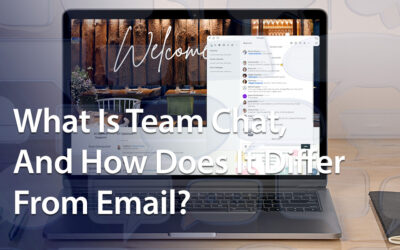Information silos exist to some extent in most organizations. While many organizations recognize that they are an issue, they are at a loss as to how to break down those silos and foster a collaborative work environment. A creative intranet design is one tool that can help to remove the barriers, providing opportunities for collaboration and genuine teamwork across the organization.
In this article, we discuss the damaging effects of information silos on business goals. We then look at how you can design an intranet that will build bridges across those silos and enable staff to see the bigger picture. Genuine collaboration and teamwork across the organization will improve your bottom dollar, with the added advantage of enhancing employee engagement. Read on to find out how.
What Are Information Silos?
 According to the Investopedia, an information silo is any management information system that is unable or unwilling to communicate with another management information system even if it is similar in nature or is within the same organization.
According to the Investopedia, an information silo is any management information system that is unable or unwilling to communicate with another management information system even if it is similar in nature or is within the same organization.
Information silos exist in all organizations and can manifest at a team, departmental or geographical level. They can even be apparent at a content or tool level as well.
Humans instinctively like to identify with a ‘tribe.’ Whether it be in terms of our nationality, our alma mater or even our favorite football team, we like to feel as though we belong to a group. The world of work is no different, and so it’s easy to see how silos have developed.
Why Are Information Silos A Problem?
Information silos as such are not necessarily a problem – indeed, they can create a strong sense of team identity and a common perception of purpose. They become a problem when important corporate information is locked into those silos without being shared or acted upon for the greater good of the whole organization. This can result in a variety of problems including:
- Duplication of effort
- Inability to quickly problem solve
- Lack of synergy
- Missed opportunities
If your research and development department, for instance, is selectively sharing information with the marketing department, then understandably marketing will be making decisions based on the limited information that is available. So, if the marketing department plans a major push for a current product unaware that research and development plans to release a new version in nine months, the resultant problems for the organization as a whole are obvious.
It’s important, therefore, that companies find ways to build bridges across the information silos by opening up lines of communication and increasing opportunities to work together and share information.
Intranet Design That Breaks Down Silos
The office intranet can be designed in such a way as to do just that job. Office intranet solutions, such as MyHub, include a multiplicity of tools to solve the challenge of information silos. These tools include:
Content management systems
- Document management systems
- Advanced search functionality
- Blogs
- Forums
- Wikis
- Collaborative workspaces
- File sharing
- Social intranet
All of these features have the potential to unlock the silos by improving information sharing, communication and team working throughout the company. The great advantage of an office intranet is that this arsenal of tools is available on one platform.
It’s important though when designing the company intranet that you don’t inadvertently replicate the information silos online or even create new ones! Careful thought and consideration to overall company goals are required to ensure that the information silos are genuinely unlocked and the data released as appropriate.
Dynamic Navigation
Clearly there are limitations required to this freedom of information so that it doesn’t simply become information overload. Going back to the scenario we outlined earlier, Rodney in Distribution doesn’t need to know what product upgrades research and development have in the pipeline, although it is useful for him to know something about the products he distributes. For Sue in Marketing, however, who is in the middle of developing the company marketing strategy for the next twelve months, this information is critical.
Dynamic navigation is one way that the office intranet can manage these differing information needs. Dynamic navigation helps users explore information driven by descriptive menus and permissions. The menus summarize the key information within their structure and the permissions can be set on a job role, team, function, project or geographical basis – whatever is appropriate. So, by definition, dynamic navigation ensures that there is more than one route to the information, but the route to that information is filtered on a permission basis so that it is directly targeted at the user.
Improving The Business Bottom Dollar

Increased Employee Engagement
A very important side effect of the improved exchange of information and collaborative working that will be seen with the demise of the silos is increased employee engagement.
Employees like to feel in control of their work environment and being able to source information directly is tremendously liberating and satisfying. Sourcing Sales records from Ben in Accounts has been a bug bear for Meredith in Marketing for many years. Ben is always preoccupied with other requests for information and it takes him a long time to give Meredith the key data that will direct the marketing plan for the next quarter. Being able to find that sales data directly on the office intranet has improved Meredith’s sense of achievement and job satisfaction immensely.

We all know that engaged employees are more productive employees. So the improved employee engagement achieved by knocking down the information silos with a company intranet will be most welcome.
If you would like to know more about how a company intranet can help you remove the information silos in your business, contact us at MyHub today.








